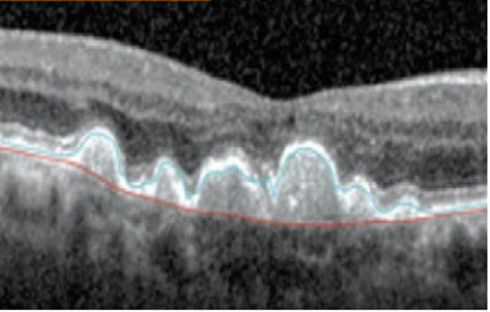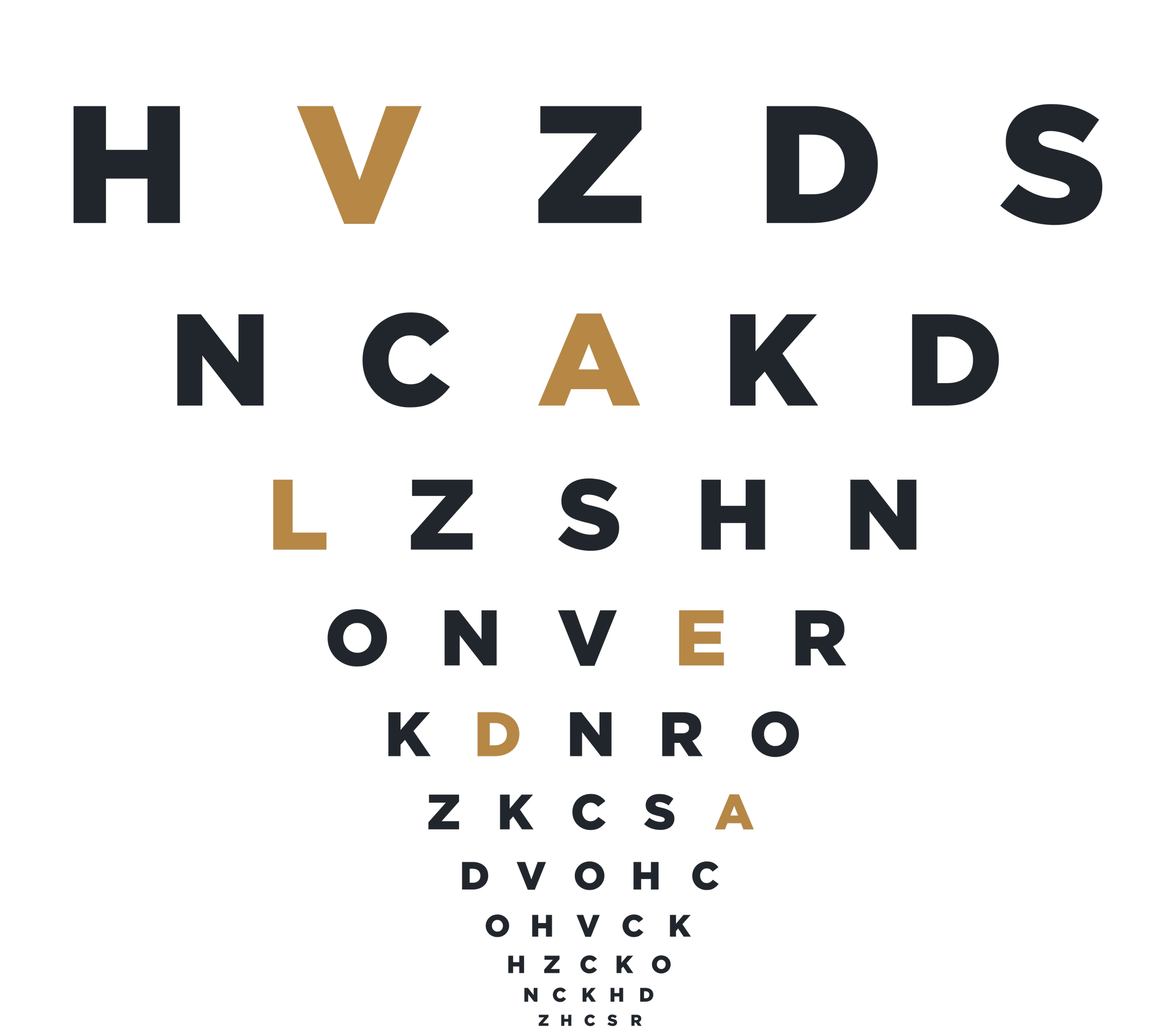LUMITHERA
VALEDA
Available at
——————————————————————————————————————-
——————————————————————————————————————-
——————————————————————————————————————-
INTRODUCING LUMITHERA VALEDA:
A cutting edge treatment for dry age-related macular degeneration.
To book, or for more information:
Recent advancements in the pioneering medical field of photobiomodulation have culminated in the Valeda Light Delivery System, which is one of the only treatments for dry macular degeneration.
Wilkinson Eyewear Studio have invested in two Valeda Light Delivery Systems, making this revolutionary therapy accessible in West Kent.
To help you find out more about dry AMD treatment, we’ve put together a collection of concise, informative guides. If you have any questions or require more information, please contact us.
What is
Macular Degeneration?
Age-related macular degeneration (AMD) is a degenerative disease that affects the macula.
To best understand the disease, it is important to know about the retina and the macula. The retina is a complex, multi-layered structure lining the inside of our eyes that facilitates vision. Specialised retinal cells called photoreceptors absorb light and output an electrical signal that ultimately ends up in the brain, where signals are combined and processed in order to allow visual perception. There is a concentration of photoreceptors in the macula - the part of the retina responsible for your central vision.
Photoreceptors are among the most metabolically active cells in the body, meaning that they require lots of energy and nutrients and produce lots of waste. These cells are supplied and nourished by another layer of cells called the retinal pigment epithelium (RPE) which are anchored on Bruch’s membrane. AMD ultimately causes damage to the essential RPE and Bruch’s membrane.
You may have come across the two types of macular degeneration; dry and wet.
-
Most cases of AMD start as the dry form, in which waste products from the photoreceptors start to accumulate in piles called drusen. As the drusen become larger and more numerous, they start to affect macular health. As the disease progresses, the RPE function reduces, and RPE cells start to die off. The end stage of dry AMD is called geographic atrophy, which is loss of the RPE and loss of central vision. Dry AMD generally has a slow progression, and until recently, there was no treatment.
On average, people with dry AMD experience a deterioration of 0.5 lines on an eye testing chart, per year.
-
Wet AMD can be considered a progression of dry AMD, although not every dry case necessarily progresses to wet.
In this disease, the damage to the RPE and Bruch’s membrane triggers the release of a hormone. This hormone causes new blood vessels to grow, often at the macula. These blood vessels are fragile and leaky, leading to a build up of fluid or blood within the macula (hence wet). This disease is more aggressive than dry AMD, but thankfully, there is a treatment which can be highly effective with early diagnosis. Injections inhibit hormones in an effort to halt the wet changes.
-
The main risk of developing AMD is stated in the name - age. As we get older, the risk of getting AMD increases. Other risk factors include:
Family History: A family history of AMD increases the likelihood of developing the disease.
Smoking: Smoking is a major modifiable risk factor, with current smokers having a two to three-fold increased risk.
Northern European Ancestry: Individuals with Northern European ancestry may have a higher risk.
UV Exposure: Inadequate protection from sunlight can increase the risk of AMD, people who spend more time outdoors should be especially mindful.
Hypertension: High blood pressure is a risk factor for AMD.
Cardiovascular Disease: A history of heart or blood vessel disease can increase the risk.
Obesity: Being overweight or obese, particularly with a BMI of 30 kg/m² or higher, may increase the risk or the progression of AMD.
Diet: Diets low in omega-3 and omega-6 fatty acids, vitamins A, C, and E, carotenoids (like lutein), and minerals (like zinc), as well as diets high in saturated fat and cholesterol, may increase the risk.
Lack of Exercise: Limited physical activity may contribute to the risk.
How does
Lumithera Valeda work?
——————————————————————————————————————-
——————————————————————————————————————-
——————————————————————————————————————-
Lumithera’s Valeda Light Delivery System utilises photobiomodulation, a pioneering technology at the forefront of medical research. Photobiomodulation describes the targeted exposure of cells to specific wavelengths of light which rejuvenate cell components and ultimately improve their function.
Three specific wavelengths of light have been proven to stimulate retinal cell activity and function:
-

NEAR IR 850
• Near infrared electro magnetic radiation
• Promotes electron transfer
• Reduces inflammation and cell death
• Improves energy supply by stimulating mitochondria
-

RED 660
• Promotes oxygen binding
• Reduces inflammation and cell death
• Improves energy supply by stimulating mitochondria
-

YELLOW 590
• Increases nitric oxide synthesis
• Promotes dilation of blood vessels resulting in better oxygen and nutrient delivery
——————————————————————————————————————-
——————————————————————————————————————-
——————————————————————————————————————-
HOW DOES THIS AFFECT AMD?
Through photobiomodulation, the retinal cells are rejuvenated, facilitating improved cell function within the macula. In cases of dry AMD, this not only slows progression, but studies have also shown that photobiomodulation can reverse some aspects of the disease - such as drusen formation, as seen below.
Baseline
After 12 months
WHAT DOES TREATMENT INVOLVE?
The treatment itself is non invasive and low risk. You will be asked to place your chin and forehead against a rest during the treatment. The entire process takes around five minutes per eye and is painless. The pupil does not need to be dilated, as the wavelengths of light are able to pass straight through the pupil and iris.
One cycle involves nine individual treatments over a three week period. Three cycles are advised each year, every four months. For the best clinical outcome, six cycles are recommended over a two year period.
As well as the treatment, you will also receive a thorough examination, OCT (a scan which provides superior visualisation of macular health), and assessment of relevant aspects of visual function, allowing your optometrist to thoroughly evaluate the effectiveness of the treatment.
What does the
Evidence say?
The Lightsite III Study
Lumithera conducted a two year study into the effect of photobiomodulation on dry AMD, involving 100 subjects, across renowned medical retina ophthalmology clinics in the United States.
The study proved that:
“Valeda improves and maintains vision”
After 12 months of treatment, subjects experienced a six letter increase in vision (just over one line), and after 24 months, this improvement was maintained.
As well as improving and maintaining vision, photobiomodulation reduces the volume of drusen at the macula, and over 24 months, drusen thickness had reduced by 24% on average.
Finally, 75% fewer subjects receiving photobiomodulation progressed to geographic atrophy compared to the control group receiving sham treatment.
As well as the Lightsite III study, many other studies have shown positive results of photobiomodulation in AMD, browse the lists here.
From their research, Valeda have concluded that six cycles over two years provides the best chance of achieving similar results.
HOW MUCH DOES IT COST?
The price of each nine-treatment cycle is £1500 (both eyes), or £1250 (one eye).
For external referrals, a full initial assessment will be required. This will be charged at £250. Should you proceed with treatment within the following 30 days, this will be deducted from the first cycle fee.
The cycle fee covers all nine appointments including the treatment, scans, assessments and time with the optometrist to discuss progress.
For more information about what a cycle involves, and how often treatment cycles are recommended, see above.
REFER A FRIEND
If you refer a friend or family member who proceeds with a cycle of treatment, we are delighted to offer you £150 off your next cycle - and there is no limit to the number of people you can refer! This means that if you refer 10 people, your next cycle (worth £1500) is free!











